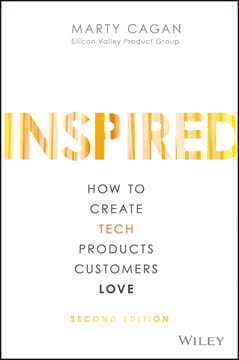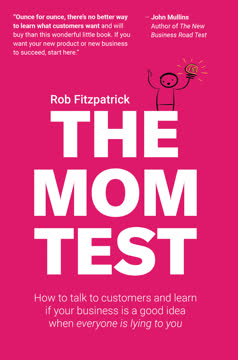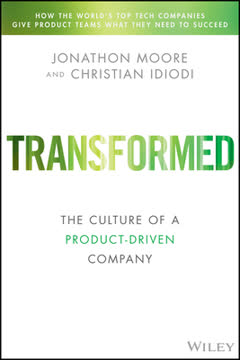Key Takeaways
1. Product Managers Lead Through Influence, Not Authority
Leading through influence is a subtle but essential skill to master if you are to be successful. For others to willingly follow your lead, they must trust you, fully believing in the purpose behind your actions.
Build relationships and trust. Product managers have no direct authority over the teams they work with, including engineers, designers, and marketers. Instead, they must lead through influence by building strong relationships, communicating effectively, and earning trust. This requires:
- Demonstrating empathy and understanding of others' perspectives
- Providing context and rationale for decisions
- Being transparent about goals, challenges, and trade-offs
- Collaborating and compromising to achieve outcomes
- Focusing on customer and business needs over personal agendas
Communicate vision and strategy. Effective product managers clearly articulate the product vision and strategy to align stakeholders and motivate teams. They reinforce goals consistently, provide regular updates, and create opportunities for open discussion and feedback.
2. Understand Your Customer Deeply to Create Valuable Products
Don't ask customers to tell you what they want, but do observe them. It will help you to prioritize their pain points and new needs and to validate improvements to your solutions.
Conduct thorough research. Understanding your target customers is crucial for creating valuable products. Product managers should:
- Define clear customer personas with relevant attributes
- Conduct regular customer interviews and observations
- Analyze quantitative and qualitative data on user behavior
- Identify unmet needs and pain points in the market
- Validate assumptions through prototypes and testing
Focus on problems, not solutions. Customers often struggle to articulate their needs or envision new possibilities. Instead of asking what features they want, product managers should:
- Uncover underlying problems and motivations
- Observe how customers currently solve issues
- Identify opportunities for improvement or innovation
- Translate customer insights into product requirements
3. Prioritize Ruthlessly to Focus on High-Impact Opportunities
There's no shortage of problems to solve and ideas to pursue. So as much as you decide what to do, also determine what not to do.
Use data-driven frameworks. Effective prioritization is critical for product success. Product managers should employ frameworks like:
- Weighted scorecards to evaluate impact and effort
- Theme-based prioritization to align with strategic goals
- Collaborative voting techniques to gather stakeholder input
- The Kano method to balance customer satisfaction and investment
Focus on core value. To avoid scope creep and deliver impactful products:
- Identify the minimum viable product (MVP) that delivers core value
- Ruthlessly cut nice-to-have features that don't align with key goals
- Continuously re-evaluate priorities as new information emerges
- Communicate trade-offs and rationale to stakeholders
4. Collaborate with Engineering to Build the Right Product
Engineers love working with other high performers. Laziness; failure to follow through (saying what you'll do and when, but not delivering); or the tendency to give incomplete or inconsistent specifications, to leave assumptions unchallenged, and to politick—all are anathemas to most developers.
Build strong partnerships. Product managers and engineers must work closely to create successful products. Key strategies include:
- Involving engineering early in product discovery and planning
- Providing clear context and rationale for product decisions
- Respecting engineering expertise and inviting their input
- Being responsive to questions and concerns during development
- Celebrating team achievements and giving credit where due
Manage trade-offs collaboratively. Product managers should:
- Work with engineering to understand technical constraints and possibilities
- Involve engineers in prioritization and scope discussions
- Be open to alternative solutions that may be more feasible or efficient
- Negotiate timelines and resources based on realistic estimates
5. Define User-Centric Requirements to Guide Development
Great product requirements: Explicitly express needs in terms of the business and customer value they will deliver. (Don't just list a set of features or tasks.)
Use user stories. Write requirements from the user's perspective:
- Format: As a [type of user], I want [to do something] so that [benefit or value].
- Focus on the desired outcome, not the implementation details
- Include acceptance criteria to define when a story is complete
Create a flexible backlog. Maintain a prioritized list of requirements that can evolve:
- Break large stories into smaller, manageable pieces
- Add details progressively as you learn more
- Regularly groom the backlog to keep it current and focused
Collaborate on details. Work with the team to elaborate on requirements:
- Hold conversations to clarify intent and uncover edge cases
- Document decisions and rationale within user stories
- Remain open to alternative solutions proposed by the team
6. Validate and Iterate Continuously with Customer Feedback
Validation must continue throughout the various stages of your product-implementation lifecycle.
Establish a continuous feedback loop. Product managers should:
- Conduct regular user interviews and usability tests
- Use prototypes and mockups to validate concepts early
- Implement analytics to track user behavior in live products
- Gather feedback from customer support and sales teams
Embrace experimentation. Use techniques like:
- A/B testing to compare different solutions
- Beta releases to gather real-world feedback
- Feature flags to gradually roll out new functionality
Adapt based on learnings. Be prepared to:
- Pivot or adjust product direction based on new insights
- Iterate on features to improve user experience and value
- Kill features or products that don't meet user needs
7. Launch Strategically to Maximize Product Impact
Market launches are inherently externally focused. The product manager participates in (and often leads) a set of activities to complete the nontechnical steps required to get a product successfully into the hands of customers.
Plan comprehensively. Coordinate across teams for a successful launch:
- Assemble a cross-functional launch team with clear responsibilities
- Define key performance indicators (KPIs) for launch success
- Create a detailed timeline for pre-launch, launch, and post-launch activities
- Prepare marketing, sales, and support teams with necessary materials
Manage the rollout. Consider strategies like:
- Soft launches or limited releases to gather early feedback
- Phased rollouts to manage risk and scale gradually
- Beta programs to engage early adopters and champions
Monitor and respond post-launch. Be prepared to:
- Track KPIs and user feedback closely after launch
- Address critical issues quickly to maintain momentum
- Celebrate successes and learnings with the team
8. Measure Success with Customer-Centric Metrics
Useful metrics focus a team on achieving a shared, actionable goal, and they are easily and frequently measured, so the outcomes and lessons are clear.
Focus on actionable metrics. Choose metrics that:
- Directly relate to customer value and business goals
- Can be influenced by product decisions and improvements
- Provide clear insights for action and prioritization
Balance different types of metrics. Consider:
- Product usage metrics (e.g., activation, retention, engagement)
- Customer satisfaction metrics (e.g., Net Promoter Score)
- Business metrics (e.g., revenue, customer lifetime value)
Avoid vanity metrics. Be wary of metrics that:
- Look impressive but don't reflect real value or growth
- Can be easily manipulated or gamed
- Don't provide actionable insights for improvement
9. Navigate Trade-Offs Between Scope, Time, and Quality
Rework almost always takes longer than doing it right the first time. If code is difficult to maintain, it takes longer to add new features. If the user experience is poor, you'll spend more time supporting users or lose them altogether.
Understand the trade-off triangle. Product managers must balance:
- Scope: The features and functionality delivered
- Time: The speed of delivery and time-to-market
- Quality: The robustness, usability, and polish of the product
Make informed decisions. When faced with trade-offs:
- Clearly communicate the options and implications to stakeholders
- Consider both short-term and long-term consequences
- Prioritize based on customer needs and business goals
- Be willing to cut scope or extend timelines to maintain quality
Manage technical debt. Balance short-term delivery with long-term sustainability:
- Allocate time for refactoring and improving existing code
- Invest in tooling and automation to improve efficiency
- Regularly assess and address accumulated technical debt
10. Develop Key Skills to Advance Your Product Management Career
Influential product managers understand that success in their role lies in the latter part of each statement, not the former.
Cultivate essential skills. Top product managers excel at:
- Strategic thinking and vision-setting
- Communication and storytelling
- Analytical and data-driven decision-making
- Empathy and customer focus
- Collaboration and influence
Embrace continuous learning. Stay current with:
- Industry trends and emerging technologies
- Product management best practices and methodologies
- Your company's business model and competitive landscape
Seek diverse experiences. Advance your career by:
- Taking on challenging projects outside your comfort zone
- Rotating through different product areas or industries
- Mentoring others and sharing your knowledge
- Building a strong network of product professionals
Last updated:
Review Summary
The Influential Product Manager receives mixed reviews, with an overall rating of 4.12/5. Some readers find it comprehensive and insightful, particularly for beginners and junior PMs. It's praised for its practical advice, templates, and case studies. However, critics note inconsistencies, superficial coverage of advanced topics, and a disjointed structure. The book is seen as a valuable reference for aspiring PMs, offering frameworks and tools used in successful teams. Some reviewers appreciate its actionable wisdom, while others find it lacking in depth for experienced professionals.
Similar Books










Download PDF
Download EPUB
.epub digital book format is ideal for reading ebooks on phones, tablets, and e-readers.




